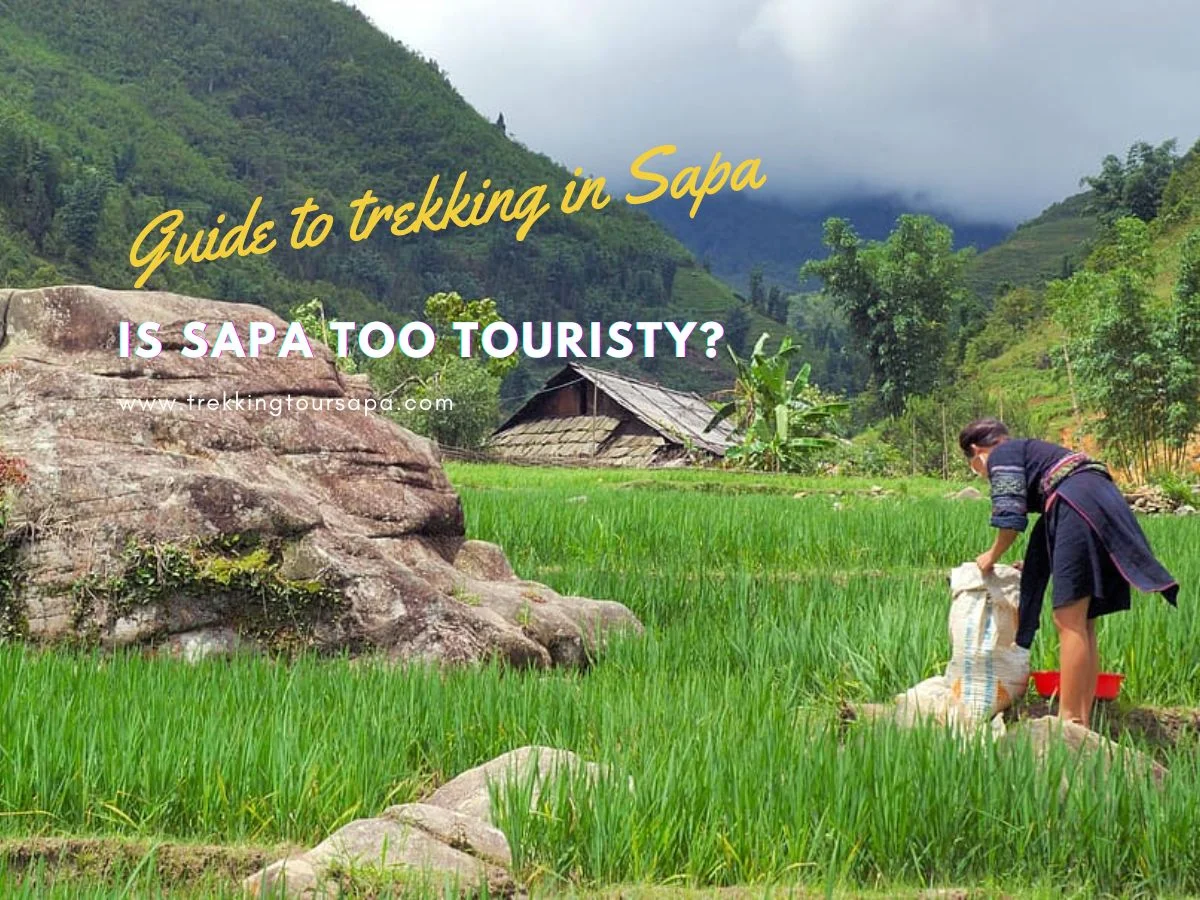Sapa, a picturesque town situated in the northwest mountainous region of Vietnam, has been attracting tourists for decades. With its stunning landscapes, diverse ethnic cultures, and abundance of outdoor activities, it’s no wonder why so many people flock to this destination every year.
However, with increased tourism comes the question – is Sapa too touristy? As someone who loves to travel off the beaten path and explore unique destinations without hoards of tourists around me, I was skeptical about visiting Sapa.

But after hearing so many rave reviews from fellow travelers and doing my research on what this town had to offer, I decided to take the plunge and see for myself if Sapa lived up to the hype or became another overcrowded tourist trap.
Table of Contents
ToggleHistory And Background Of Sapa
Nestled in the mountains of northern Vietnam, Sapa is a town that exudes beauty and charm. Its rich history dates back to the early 1900s when French colonizers discovered its unique location and climate.
Since then, it has become a hub for cultural festivals, attracting visitors from all around the world. What makes Sapa truly special is its ethnic diversity. The town is home to several minority groups including Hmong, Dao, Giay, Tay, and Xa Pho.

Each group has its distinct traditions and customs which are showcased through various celebrations throughout the year. From colorful parades to lively dance performances, there’s always something happening in Sapa that highlights this vibrant mix of cultures.
Visiting Sapa During Peak And Off-Peak Seasons
As we learned in the previous section, Sapa has a rich history and cultural background that makes it an attractive destination for tourists. However, with popularity comes certain drawbacks. Many visitors wonder if Sapa is too touristy.
The answer to this question largely depends on when you visit. During peak season (June-August and December-February), Sapa can feel overcrowded with tourists. The upside of visiting during these months is that the weather conditions are generally favorable but be prepared for long lines at popular attractions and difficulty finding accommodations.
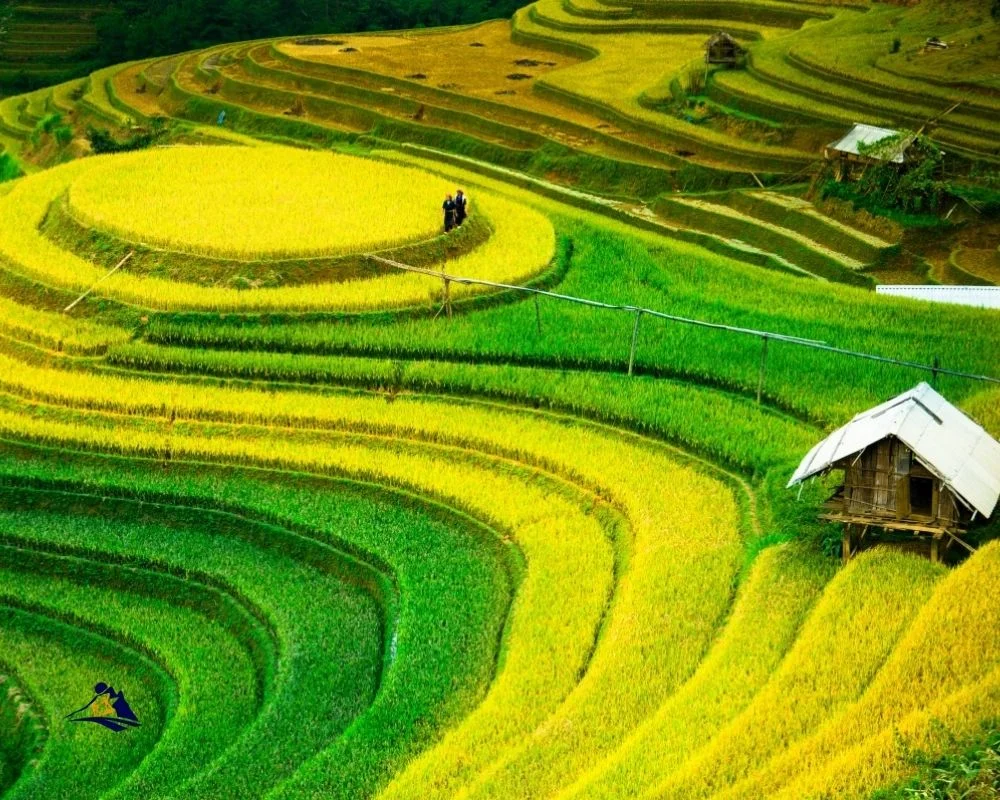
On the other hand, visiting during off-peak season (March-May and September-November) means fewer crowds and a chance to experience more authentic cultural impact. However, be aware that weather conditions may not be as ideal, with colder temperatures and occasional rain or fog.
Here are four things to keep in mind when deciding whether to visit Sapa during peak or off-peak season:
- Consider your tolerance for crowds
- Think about what kind of weather you prefer
- Decide which activities are most important to you
- Research local festivals or events happening during your planned travel dates
- Take into account your budget and the cost of accommodations and transportation during peak and off-peak seasons.
Popular Activities In Sapa
So, you’ve found yourself in Sapa. The quaint little town nestled in the mountains of northern Vietnam that’s become increasingly popular with tourists over the years. Yes, it’s true – Sapa has succumbed to its success and now finds itself teeming with visitors year-round.
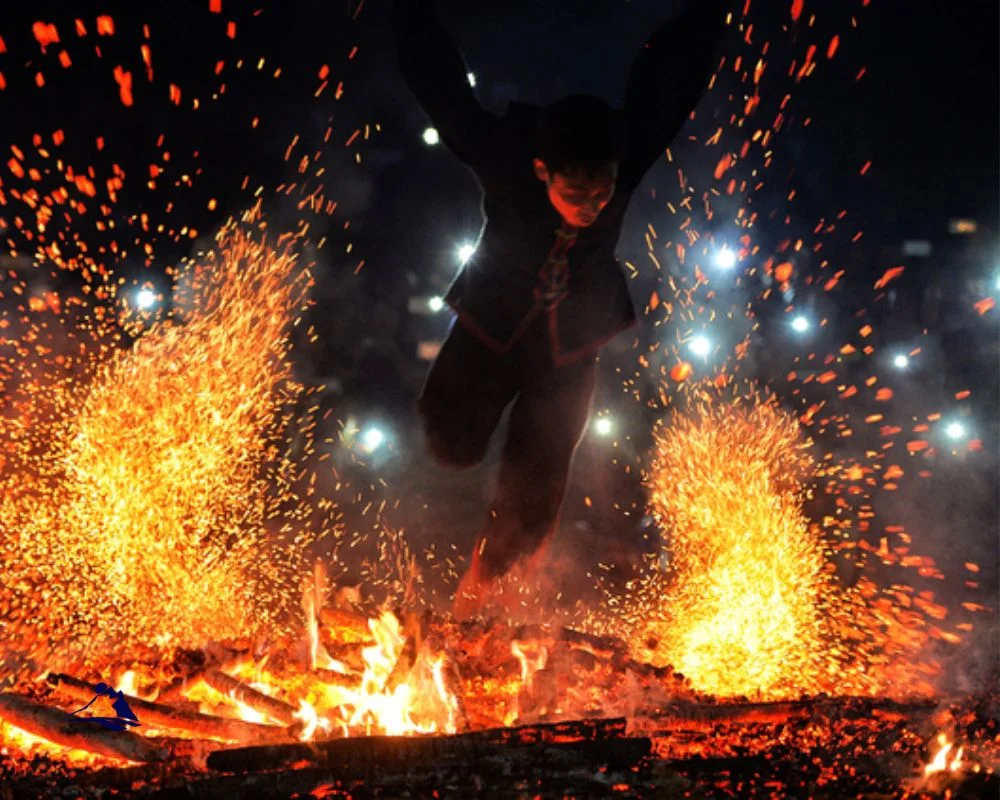
But fear not! There are still plenty of unique cultural experiences to be had. One such experience is immersing yourself in the local traditions of the hill tribes that call this region home. From Hmong embroidery lessons to Red Dao herbal baths, there are countless ways to learn about and appreciate the rich cultural impact these communities have on Sapa. And while some may view these activities as ‘touristy,’ they offer a genuine opportunity for travelers to connect with locals and gain a deeper understanding of their way of life.
So go ahead, embrace your inner tourist, and dive headfirst into all Sapa has to offer! Now that you’ve spent time exploring Sapa’s vibrant culture, let’s talk about where you’ll rest your weary head at night. Lucky for you, there are a plethora of accommodations available to suit every budget and preference. Whether you’re looking for a cozy homestay hosted by a friendly local family or a luxurious resort with stunning mountain views, Sapa has got you covered.
Sapa 1 Day Tours
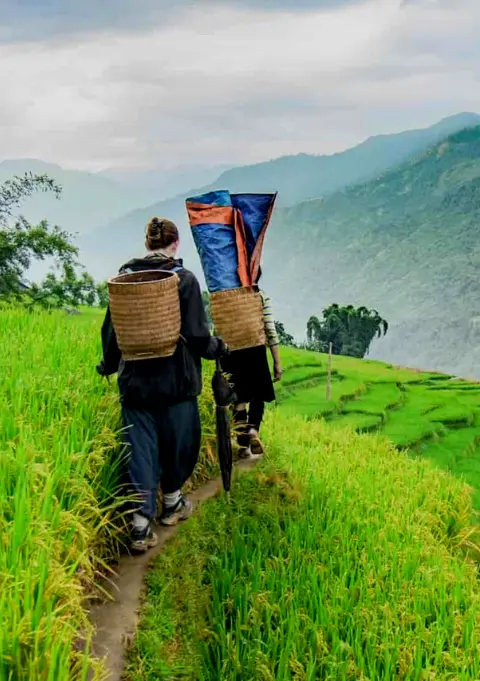
- 1 day experience
- Moderate to challenging
- Cultural immersion & active adventure
- Rice fields, valleys & villages
- Private tours
- Vegan-friendly
Sapa 2 Day Tours
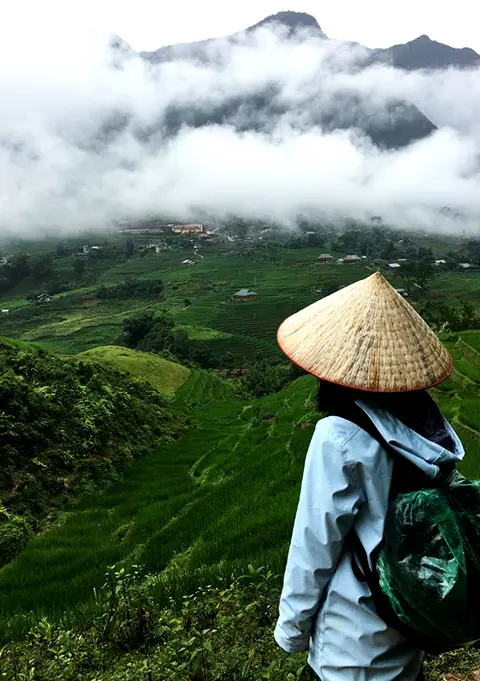
- 2 days 1 night experience
- Moderate to challenging
- Cultural immersion & active adventure
- Mountains, valleys, rice fields and villages
- Private tours
- Vegan-friendly
Sapa 3 Day Tours
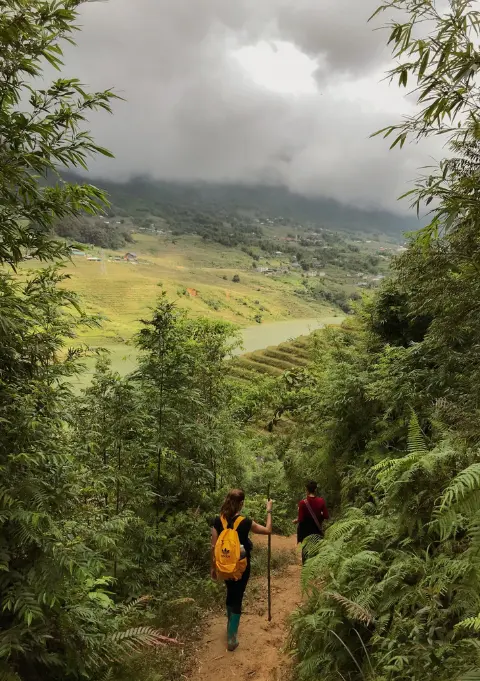
- 3 days 2 night experience
- Moderate to challenging
- Cultural immersion & active adventure
- Mountains, valley, rice fields & villages
- Private tours
- Vegan-friendly
Sapa 4 Day Tours
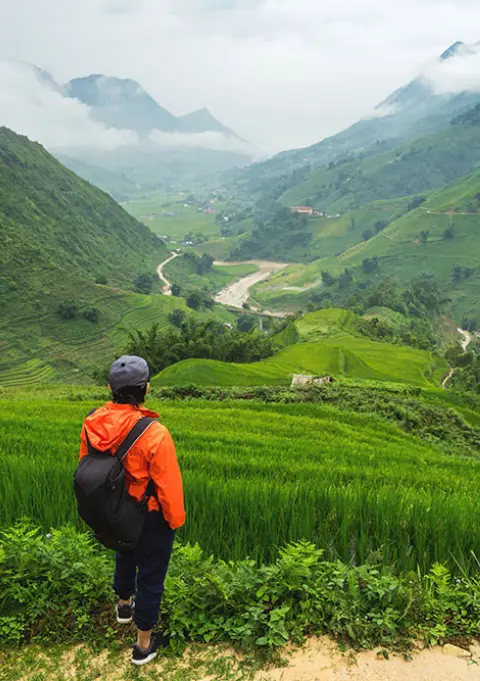
- 4 days 3 night experience
- Moderate to challenging
- Cultural immersion & active adventure
- Mountains, valleys, rice fields & villages
- Private tours – Less Touristic
- Vegan-friendly
Keep reading to discover the different types of accommodations available in this bustling town!
Types Of Accommodations Available
When it comes to finding a place to stay in Sapa, there are a variety of options available depending on your budget and preferences. For those seeking luxury accommodations with stunning views, there are several high-end resorts that offer top-notch amenities such as spas, infinity pools, and gourmet dining options. These resorts often come at a premium price but provide an unparalleled level of comfort and relaxation.
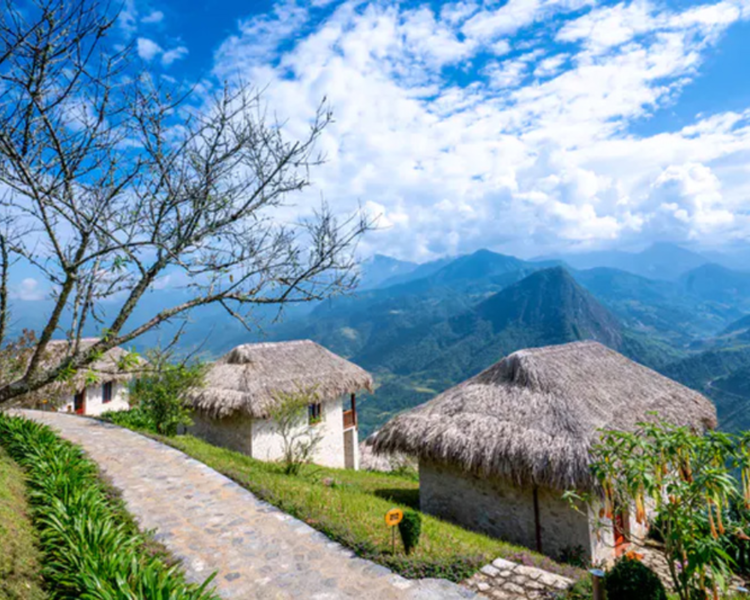
On the other hand, for travelers on a tight budget or those who prefer a more communal atmosphere, there are plenty of affordable hostels and guesthouses scattered throughout the town. These types of accommodations generally feature shared dormitory-style rooms or private rooms with basic facilities. While they may not have all the bells and whistles of luxury resorts, these budget-friendly options allow you to save money while still experiencing everything that Sapa has to offer.
As you settle into your chosen accommodation, you might be wondering how best to explore this charming mountain town. Fear not- getting around Sapa is relatively easy thanks to its compact size and abundance of transportation options.
From renting a motorbike to hiring a local guide or hopping on one of the many tour buses departing daily from central locations like Fansipan Legend Cable Car Station, exploring this picturesque region has never been easier!
Getting Around The Town
After being bombarded with the hustle-bustle of the tourist traps, you might be wondering if Sapa is too touristy. Well, let me tell you that it’s not just a regular tourist town, but an exotic paradise for acclimatizing to the local culture and traditions. Yes, it can get crowded during peak seasons, but that doesn’t mean there isn’t much to do or see.
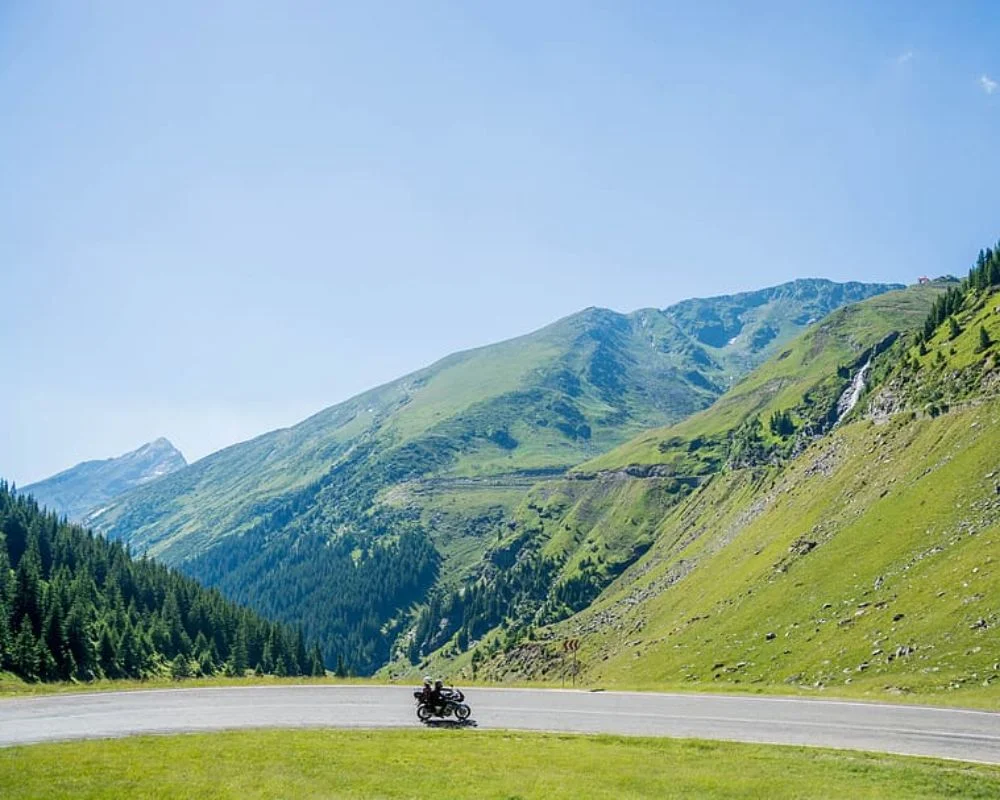
When exploring Sapa, getting around is easy as most attractions are within walking distance of each other. You could also rent a motorbike or hop on one of the many buses available at reasonable prices. The scenic views will leave you in awe while taking away all your travel blues.
Moreover, don’t forget to interact with locals who are always ready to give you some insider tips about their hometown. Meeting them will make your journey even more memorable and worthwhile than just visiting the usual sightseeing spots alone.
Meeting The Locals
While Sapa may be a popular tourist destination, it is still possible to experience cultural exchange and learn about local customs by meeting the locals. An excellent way to do this is by joining a homestay program where you can stay with a local family in their home. This allows you to see how they live day-to-day, enjoy traditional meals together, and even participate in activities like farming or handicrafts.
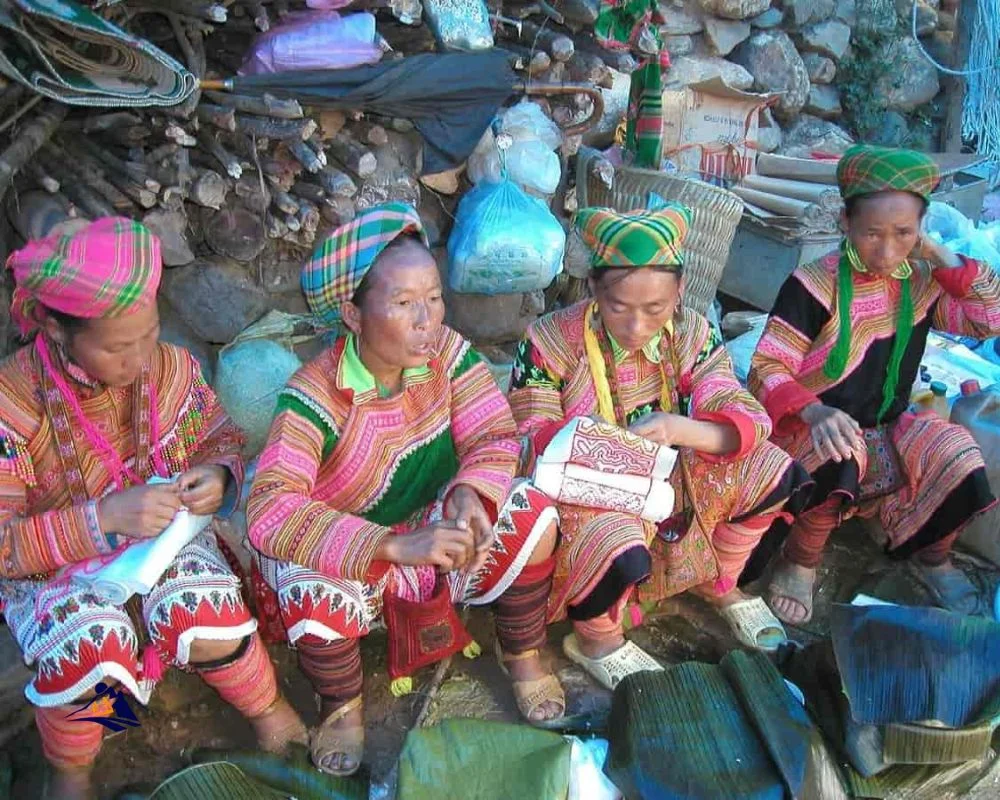
Another option is to hire a local guide for your trekking tours around the rice fields and mountains surrounding Sapa. These guides are often from ethnic minority groups and have valuable knowledge of the area’s history, culture, and traditions that they are happy to share with visitors. By choosing these options over mass-market activities, you not only support the community but also gain an authentic insight into life in Sapa beyond what is presented on brochures or social media posts.
As we’ve seen above, there are many ways to immerse yourself in the local culture while visiting Sapa. However, it’s essential to weigh out both the pros and cons of tourism here before making any plans.
The Pros And Cons Of Visiting Sapa
Sapa, a mountainous town in Vietnam’s northwestern region is definitely one of the most popular tourist destinations in the country. It’s not hard to see why; Sapa boasts stunning landscapes with rice terraces and majestic mountains that are sure to take your breath away. However, with its increasing popularity comes the question – Is Sapa too touristy?
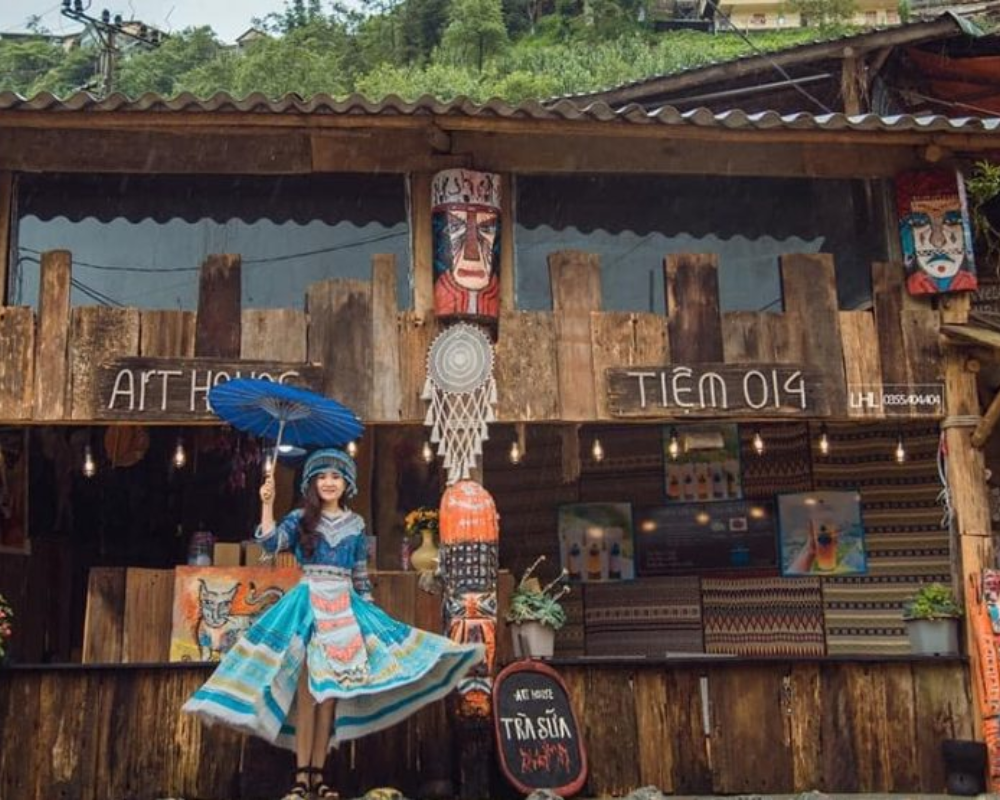
The answer isn’t as simple as yes or no. On one hand, tourism has brought economic benefits to the area and its people, creating jobs and opportunities for locals. Visitors can also experience the unique culture of ethnic minority groups living in Sapa through homestays and cultural tours. But on the other hand, mass tourism has led to overcrowding, environmental degradation, and cultural impacts such as loss of traditions due to commercialization. Travelers should weigh these pros and cons before deciding whether or not to visit Sapa.
- The cost of traveling to Sapa varies depending on transportation mode.
- Trekking tours offer an immersive experience of local life but may be physically challenging for some.
- Homestays provide an opportunity for visitors to immerse themselves in the local culture but may lack privacy.
- Visiting during peak season means larger crowds while visiting off-season may mean limited activities.
- Eco-tourism initiatives such as responsible trekking give back to the community and environment while promoting sustainable travel practices.
Sapa 1 Day Tours

- 1 day experience
- Moderate to challenging
- Cultural immersion & active adventure
- Rice fields, valleys & villages
- Private tours
- Vegan-friendly
Sapa 2 Day Tours

- 2 days 1 night experience
- Moderate to challenging
- Cultural immersion & active adventure
- Mountains, valleys, rice fields and villages
- Private tours
- Vegan-friendly
Sapa 3 Day Tours

- 3 days 2 night experience
- Moderate to challenging
- Cultural immersion & active adventure
- Mountains, valley, rice fields & villages
- Private tours
- Vegan-friendly
Sapa 4 Day Tours

- 4 days 3 night experience
- Moderate to challenging
- Cultural immersion & active adventure
- Mountains, valleys, rice fields & villages
- Private tours – Less Touristic
- Vegan-friendly
As much as there is to explore within Sapa itself, it would be a shame not to venture out into the surrounding areas when visiting this part of Vietnam. With breathtaking scenery such as cascading waterfalls and tranquil countryside villages all around you, exploring beyond just Sapa will only enhance your trip further. Plus, it’s always worth taking time away from busy tourist hotspots!
Exploring The Surrounding Areas
Hidden villages are the perfect way to get off the tourist track and truly experience the culture of the area. Local markets are bustling with locals trading goods and produce, and offer a unique insight into the daily life of the area. Trekking trails provide a fantastic way to explore the surrounding areas, with plenty of hidden gems waiting to be discovered.
Hidden Villages
As you explore the surrounding areas of Sapa Vietnam, it’s easy to get caught up in tourist traps and forget about the hidden villages that offer a glimpse into rural life. These villages may not have the same level of development or amenities as Sapa town, but they provide an authentic cultural experience that can’t be found elsewhere.
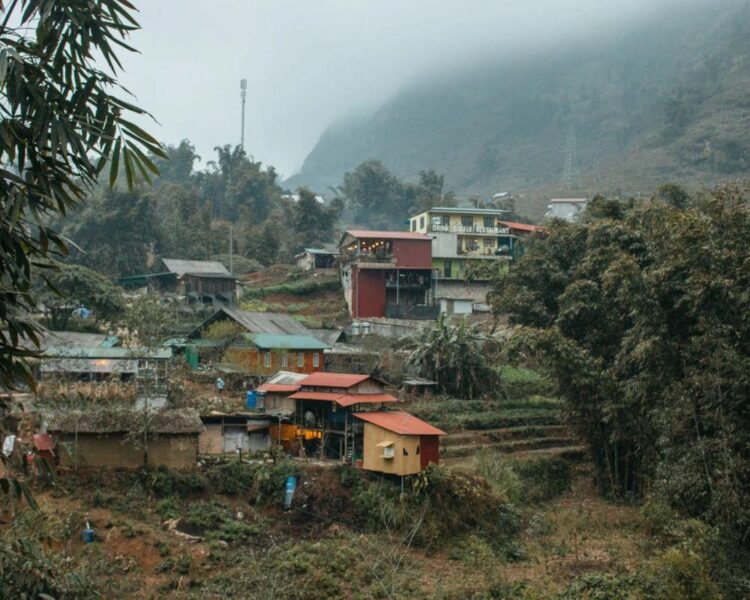
The impact of tourism on these communities is something to consider, but with responsible and respectful travel practices, visitors can still appreciate their way of life without causing harm.
Take a step off the beaten path and immerse yourself in the traditions and customs of these hidden gems.
Local Markets
Now that you’ve experienced the hidden villages around Sapa, it’s time to dive deeper into the local culture by visiting the bustling markets. These are not your typical souvenir shopping spots – they’re where locals come to buy and sell everything from fresh produce to handmade crafts. The sights, sounds, and smells can be overwhelming at first, but don’t let that discourage you! Embrace the culture clash and get lost in the maze of stalls selling unique items that you won’t find anywhere else.
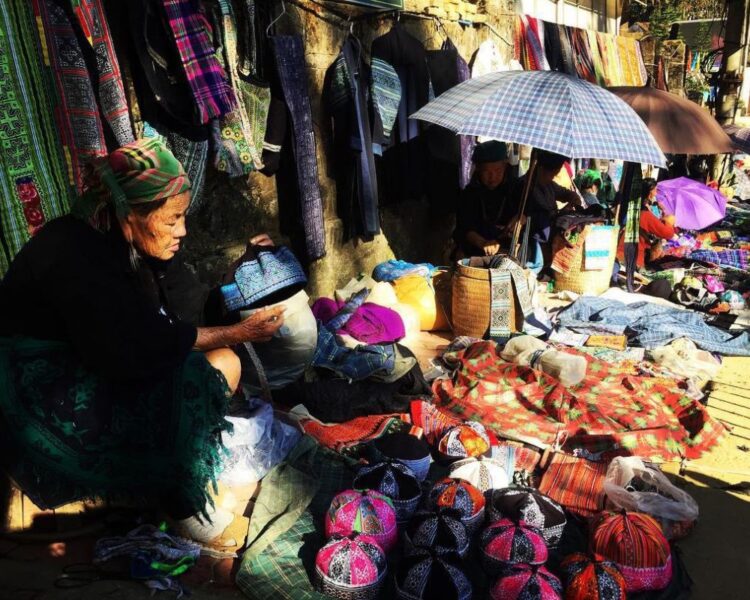
Just remember to bargain respectfully and keep an open mind as you explore these vibrant marketplaces.
Trekking Trails
Now that you’ve explored the local markets and immersed yourself in the colorful culture of Sapa, it’s time to venture out into the surrounding areas. For those seeking a deeper connection with nature and authentic cultural exchange, eco-tourism trekking trails are the perfect option. Traversing through lush forests and cascading rice terraces, these treks offer breathtaking views of the mountains while providing opportunities to interact with ethnic minority communities along the way.
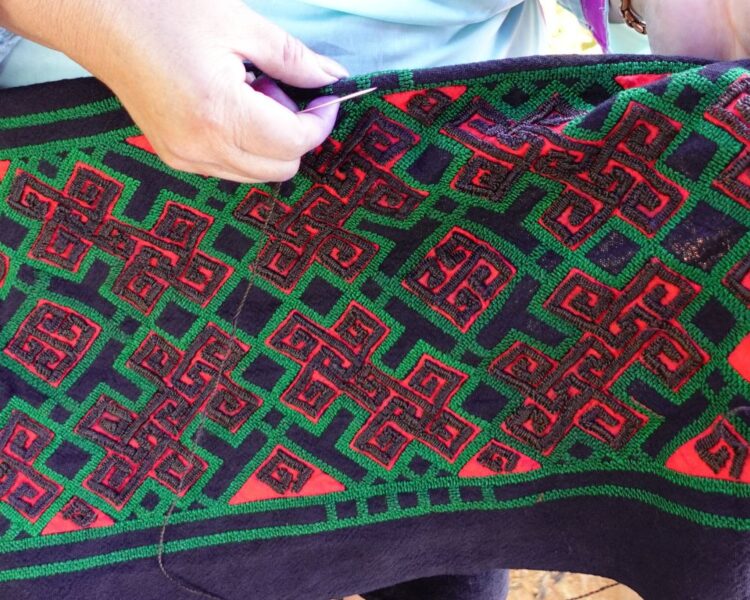
You’ll have the chance to learn about their way of life, try traditional foods, and even participate in hands-on activities such as farming or handicraft-making. As you hike through this stunning landscape, it’s hard not to feel a sense of liberation from the hustle and bustle of city life. The fresh air and serene surroundings serve as a reminder of our innate desire for freedom and connection with nature. So if you’re looking for an unforgettable adventure that combines both environmental conservation and cultural immersion, don’t hesitate to explore Sapa’s eco-tourism trekking trails.
It’s sure to be an experience that will leave you feeling rejuvenated and inspired.
Eating And Drinking In Sapa
As you wander through the bustling streets of Sapa, it’s hard not to notice the abundance of touristy restaurants. From Western-style cafes serving up frothy cappuccinos to pizza joints and burger bars, there seems to be no shortage of options for those craving a taste of home.
But if you’re looking to truly experience the local culture and cuisine, fear not – there are plenty of opportunities to do so in Sapa. The town is home to an array of eateries that celebrate traditional Vietnamese dishes and incorporate regional ingredients like black mushrooms, bamboo shoots, and plump river fish. Don’t miss out on trying some classic favorites like pho (noodle soup), bánh mì (baguette sandwich), or chả cá (grilled fish with turmeric and dill).
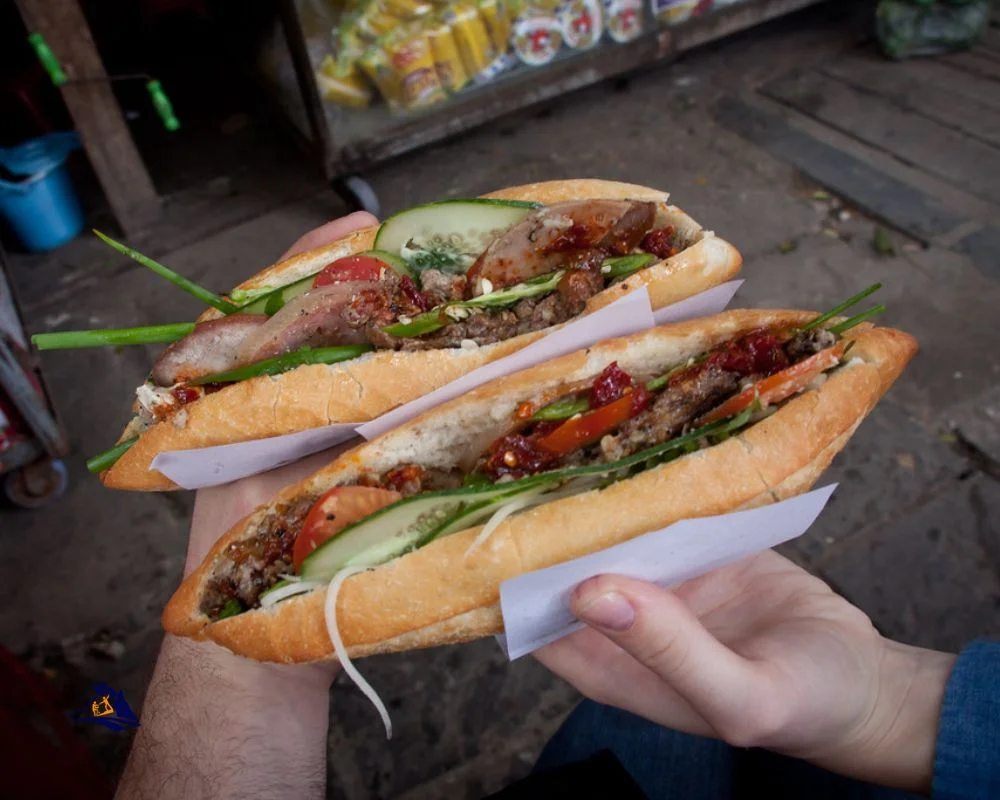
By seeking out these cultural influences, you’ll gain a deeper appreciation for the history and traditions of this fascinating part of Vietnam.
As important as eating well maybe during your travels, it’s just as crucial to stay hydrated. Luckily, Sapa boasts several excellent drinking spots where you can enjoy refreshing beverages while taking in views of the surrounding valleys and mountains. Whether you prefer sipping on hot tea at a cozy teahouse or indulging in a cold beer at a rooftop bar, there are plenty of ways to quench your thirst while immersing yourself in the beauty of this incredible landscape.
So go ahead – treat yourself to something tasty and raise a glass to all that Sapa has to offer!
Ready for more tips on how to make the most out of your trip? Keep reading!
Tips For Making The Most Out Of Your Trip
After indulging in the delectable cuisine of Sapa, it’s time to explore what else this picturesque town has to offer. However, with its growing popularity among tourists, some may wonder if Sapa is too touristy for a peaceful getaway. The answer lies in how you choose to spend your time there.
One way to avoid crowds and support local businesses is by taking part in community-based tours. These tours are led by locals who will take you on a unique journey through their village or town. Not only will you have an authentic experience but you’ll also be contributing to the livelihoods of those living in these remote areas.
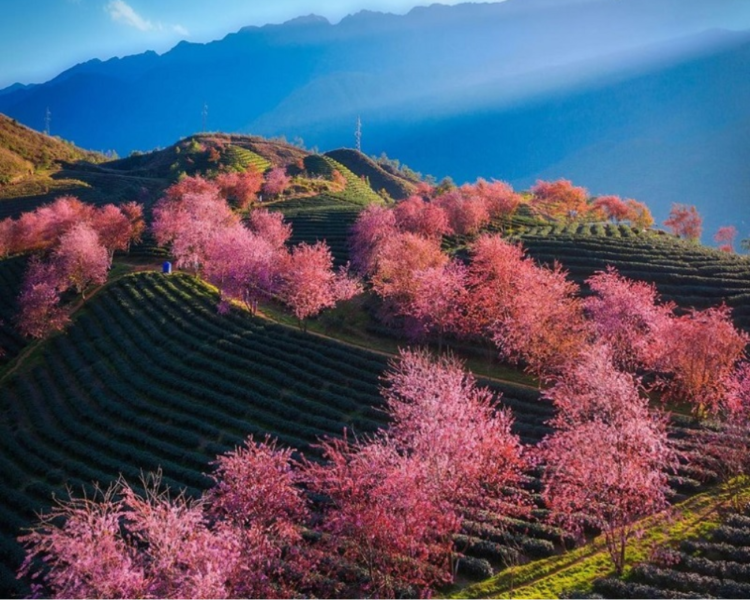
Another option is to venture off the beaten path and explore lesser-known attractions such as waterfalls or hidden villages. This not only allows for a more intimate experience but also helps alleviate overcrowding at popular spots.
To fully make the most out of your trip, it’s important to keep an open mind and embrace the culture around you. Immerse yourself in the daily lives of locals and learn about their traditions and customs. Take advantage of opportunities to try new foods or participate in cultural festivals. By doing so, not only will you create lasting memories, but you’ll also gain a deeper appreciation for the beauty that surrounds you in Sapa.
So go ahead, pack light, leave expectations behind, and embark on an adventure that celebrates freedom!
Is Sapa Too Touristy? Frequently Asked Questions
How Much Does It Cost To Visit Sapa?
A journey to Sapa can be a voyage of discovery, an opportunity for introspection and growth. It’s the kind of place where every corner tells a story, where the mountains seem alive with secrets waiting to be uncovered. Accommodation options vary from budget-friendly hostels to luxurious hotels that offer stunning views of rice terraces and valleys.
Visitors can immerse themselves in the local culture through shopping experiences at markets filled with handmade crafts and traditional garments.
While it may come at a cost, there is no price for the freedom one feels when exploring this magnificent destination.
What Is The Best Time Of Year To Visit Sapa?
The best time of year to visit Sapa, Vietnam is during the months of September to November when the weather conditions are favorable and cool. It’s perfect for those who love traveling solo as this period provides a peaceful ambiance, away from large crowds.
With clear skies and mild temperatures, it’s an ideal opportunity to explore the rice terraces and mountainous landscapes that surround the town.
The serenity of Sapa in these months offers a sense of tranquility that liberates one’s mind and soul.
Are There Any Cultural Customs Or Etiquette That Travelers Should Be Aware Of When Visiting Sapa?
When traveling to Sapa, it’s important for visitors to keep in mind cultural respect and local engagement. To fully immerse oneself in the experience of this beautiful region, taking time to learn about customs and etiquette can help create a deeper connection with the locals. From dressing appropriately when visiting temples or religious sites to learning basic phrases in Vietnamese, small efforts can go a long way towards showing respect and appreciation for the culture.
Engaging with locals through homestays or participating in community activities can also provide insight into daily life and offer a unique perspective on the region.
By embracing cultural differences and seeking out authentic experiences, travelers can truly feel free from the constraints of typical tourist destinations.
Can Visitors Hike Or Trek Independently In Sapa, Or Do They Need To Hire A Guide?
Exploring the stunning natural beauty of Sapa on foot is an exhilarating experience that should not be missed. Visitors have the option to hike or trek independently, but hiring a local guide can provide valuable insight into the area’s culture and history. The best trekking routes are often off-the-beaten-path and require some level of expertise, so having a knowledgeable guide by your side ensures safety as well as access to hidden gems.
Don’t let the idea of hiring a guide deter you from experiencing Sapa in all its glory – these locals are passionate about their land and eager to share it with visitors seeking adventure and authenticity. So, lace up those hiking boots and get ready for a journey through breathtaking scenery that will leave you feeling liberated and refreshed.
What Is The Current State Of Tourism Development In Sapa, And How Is It Affecting The Local Community?
When it comes to tourism development in Sapa, sustainable practices are key.
With the influx of visitors over recent years, there has been a cultural impact on the local community. However, efforts have been made to preserve traditional ways of life and support local businesses through responsible tourism initiatives.
From homestay programs with Hmong families to eco-tourism ventures that promote environmental conservation, there are options for travelers seeking an authentic experience while contributing positively to the area’s economy.
While some may argue that Sapa is too touristy, the focus should be on promoting sustainable tourism practices that benefit both visitors and locals alike.
Conclusion
In conclusion, the question of whether Sapa is too touristy ultimately depends on individual preferences. For some, the crowds and commercialization may detract from the experience; for others, it may add to the excitement and convenience. Personally, I found that visiting during shoulder season (April-May or September-October) allowed me to avoid the peak crowds while still enjoying pleasant weather and stunning scenery. Additionally, hiring a local guide not only provided valuable insight into Hmong culture and customs but also supported sustainable tourism practices.
However, it’s important to remember that tourism development in Sapa has come at a cost to the local community. As travelers, we have a responsibility to respect cultural traditions and contribute positively to the economy.
Overall, with proper planning and awareness of cultural sensitivities, visitors can enjoy all that Sapa has to offer while minimizing negative impacts on the environment and communities.
